With the Internet of Things (IoT) penetrating sectors that were not too long ago considered unreachable, in the Indian scheme of things, it is only imminent that smart concepts are applied to even rural India where there is plenty of data generated but with less solutions implemented. Now, with this being the scenario, smart concepts have in fact been deployed in agriculture to help farmers in conserving valuable energy and focusing their strengths on harvesting better. With IoT-driven smart agro solutions being the focal point, we take a look at Milktrak and Smartfarm, two solutions that help farmers conserve valuable time, by mitigating plaguing issues.
MilkTrak milk meter
It automatically tracks both the milk and the cow/buffalo in India.
Deployer: Bangalore-based StellApps Technologies
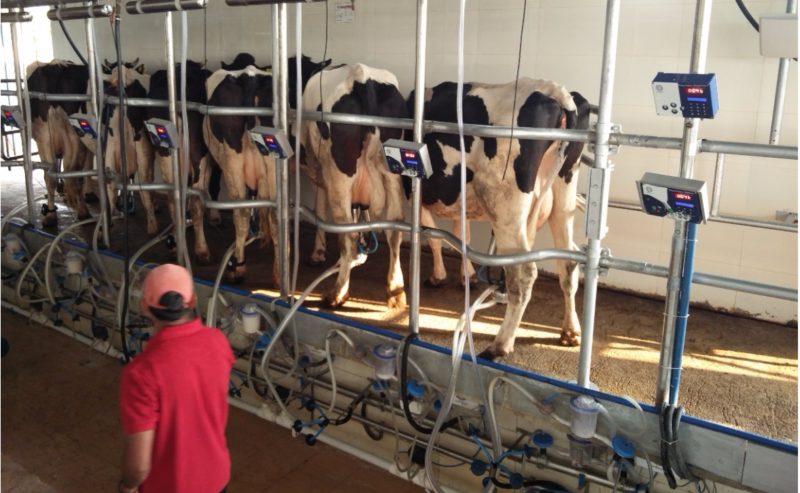
Usefulness of this solution
Primarily, MilkTrak presents an overall picture of the health of a cow, by analysing various aspects such as Yield, Temperature, and Conductivity of the milk obtained (from the cow).
This information is generated through multiple sensors embedded within the milk meter that transmit this data to a centralized cloud through a M2M wireless gateway.
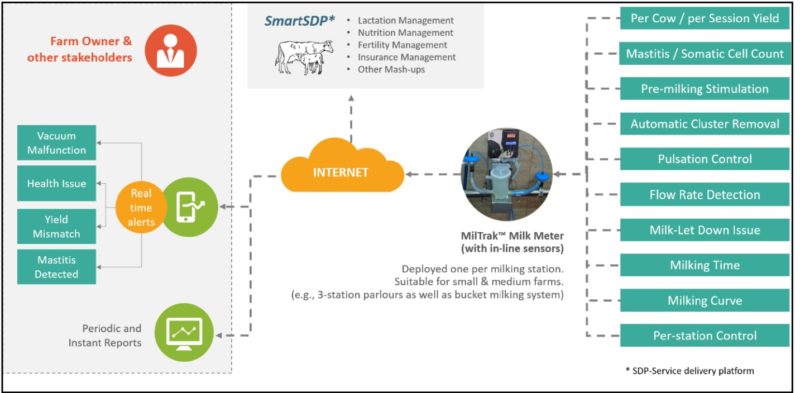
What happens after the above information reaches the cloud
Once in the cloud, various cloud-based applications execute analytics and present the overall information consisting of a detailed report about the current health of the cow. This includes diagnosis at an elementary level as well so that farmers can detect early signs of diseases and get the cow treated.
Now, remember that milk from a healthy cow always triumphs milk obtained from that of even a minorly ill cow/buffalo.
After performing analytics at the cloud level, MilkTrak automatically transmits vital details such as quality of milk, a detailed report on this, along with the health of the cow/buffalo to end users. End users here refer to farmers, veterinarians, and engineers working towards building IoT-driven agro solutions.
This system potentially serves as health monitors of cows/buffaloes to directly increase the milk yield. Farmers and dairy owners can potentially save valuable time here as the entire process is automated whilst reaching the right end users and service providers. The total cost involved here also drastically reduces.
“300 million bovines are reared across 75 million farms in the Indian dairy sector, of which 1/3 rd are buffaloes.”, states Ranjith Mukundan CEO and Co-Founder of StellApps Technologies – developers of MilkTrak.
How is MilkTrak used?
According to Ranjith, MilkTrak can be used by incorporating within any of the readily available Automatic Milking Systems.
MilkTrak milk meter can also be fixed onto the smaller Bucket Milking Systems as well; these are more common, than the Automatic Milking Systems, due to their cost factor.
Where has MilkTrak been deployed ?
As per Ranjith of StellApps, MilkTrak has currently been deployed in various farms in India, expanding to regions such as Nepal and Kenya. MilkTrak also belongs to a suite of IoT-driven agro apps developed by StellApps, called SmartMoo.
“We figured that if we can use Sensors in the farms to automatically acquire data and apply analytics and machine learning on the cloud and then use the outcome of the analytics and machine learning – we could solve critical issues.”, stated Ranjith of StellApps.
Deployed solution 2: SmartFarm Farm Management Software
Deployer: Bangalore-based CropIn Technology
Usefulness of the solution
SmartFarm (a mobile and web application) makes it possible to manage all aspects of farming right from pre-sowing till the post-harvest season.
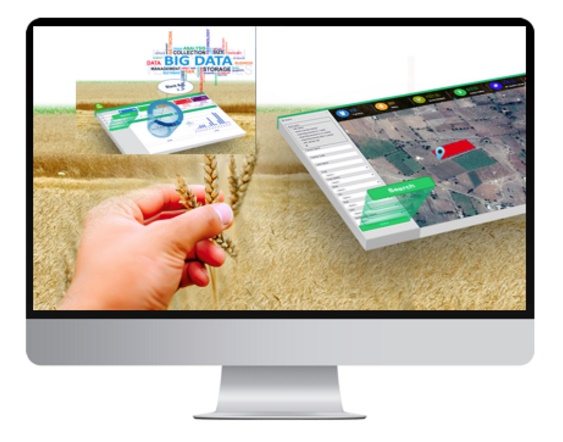
SmartFarm is also relatively easy for farmers to use, as the solution offers real-time data driven inputs along with a host of best farming practices with which informed decisions can be taken and the overall productivity improved.
SmartFarm captures data at all levels, and provides refined analytics to farmers along with visual representations of these for easy understanding.
Another target area of SmartFarm application suite, is businesses for whom agriculture and farming operations is an area of priority.
How SmartFarm works?
Basically, Smart Farm is integrated with data science, machine learning, and artificial intelligence (AI); these identify various farm areas (intended to be monitored by the client) and analyse these by characterising into high risk and low risk zones. In these regions, specific aspects such as crop health, extent of crop damage (if any), along with the estimation in yield are generated.
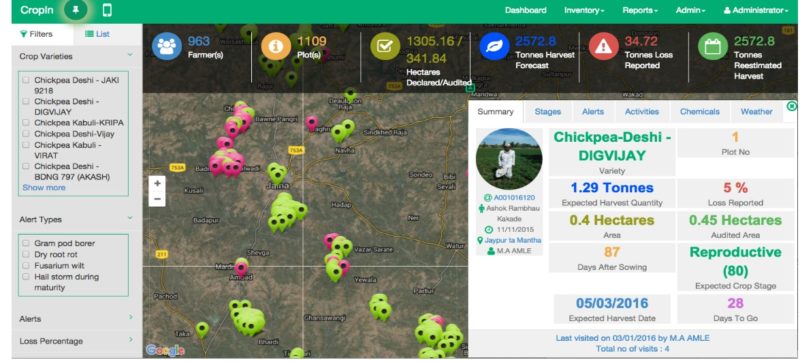
Information thus generated above are passed through CropIn’s proprietary Crop models and various customised algorithms to predict the yield of crop along with detecting the type of crop suitable for cultivation at a particular piece of land.
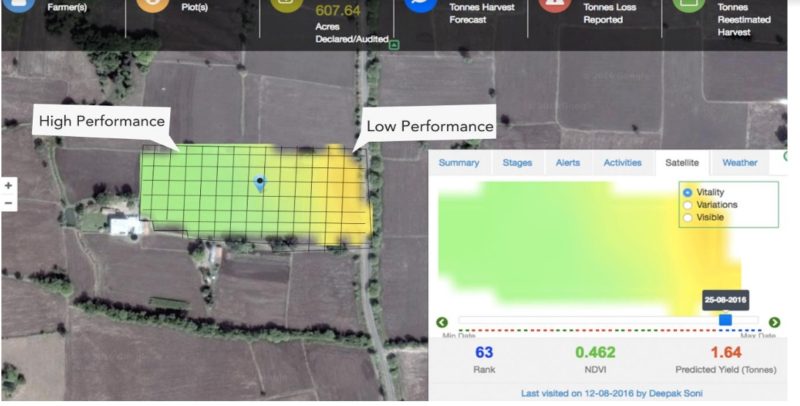
“This technology also analyses billions of live farm pixels (10×10 Mt. resolution every 10 days) along with parameters like weather, soil, NDVI, LAI, Chlorophyll, and more.”, states Krishna Kumar – CEO at CropIn Technologies.
Also, SmartFarm uses popular technological aspects like satellites and remote sensing along with leveraging AI and machine learning as stated above.
Real-time deployment of SmartFarm
SmartFarm software are being used by Sahyadri Farmers (registered in the state of Maharashtra) who fall into the category of Farmer Producer Organisations (FPOs) identified by the Government of India as ‘Marginal Farmers’ with land possession being less than 1 hectare.
Now, Sahydari Farmers consist of individual farmers numbering more than 1000 . Folks at CropIn Technologies claimed to have deployed SmartFarm to mitigate plaguing issues such as compliance, traceability, and quality control. These parameters are defined by exporters who have formulated stringent norms.

With SmartFarm, purchasers can even verify authenticity of the produce sold to them through Sahyadri Farmers; produce in this case are grapes grown by farmers.
Other farmer-centric deployments of SmartFarm have witnessed results wherein customers responded to having observed an increase of nearly 12% in the overall crop yield. There have been instances where effective deployments have led to reduction in crop losses due to pest interference. Savings were reported to be nearly 80% in this regard.
There are other farmer-usefulness aspects here
Apart from SmartFarm, CropIn has also come out with a farmer profiling smart system and pilot rating and risk index; this system has been deployed on systems of various Banking, Financial Services and Insurance (BFSI) firms; using ‘alternate data’.
This system enables farmers to enhance their credit scores whilst offering alternate data to banks and governmental organisations to enable these offer loans to farmers along with crop insurances.
Similar to the above, we have also covered another Agro-IoT deployment that helps in effective farmer profiling along with barn monitoring in Tobacco Curing Barns. This system is a smart Temperature and Humidity Monitoring System.








